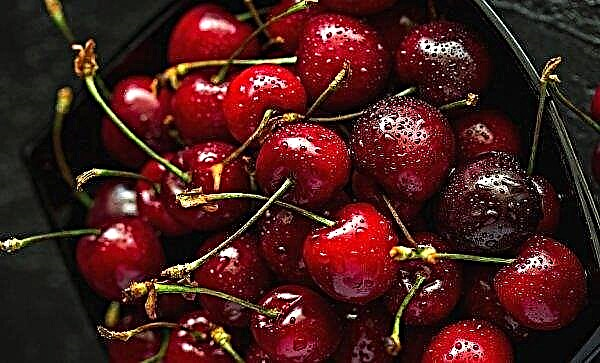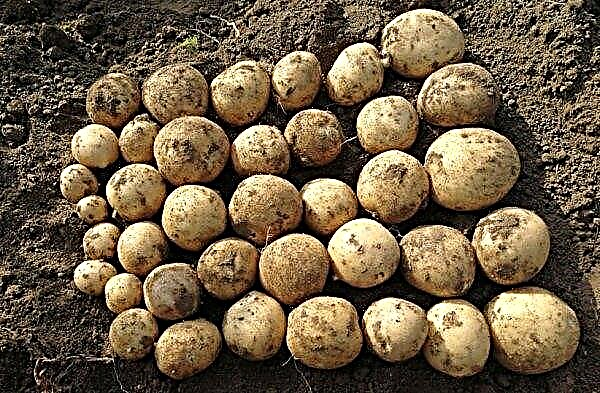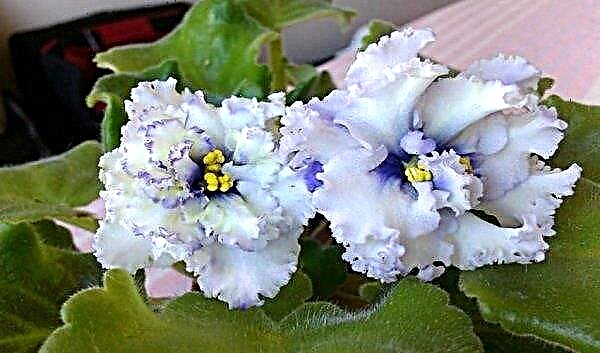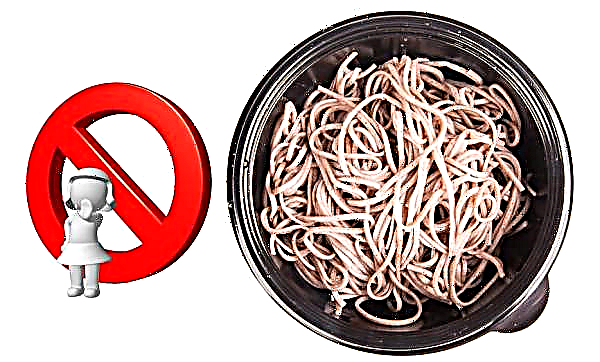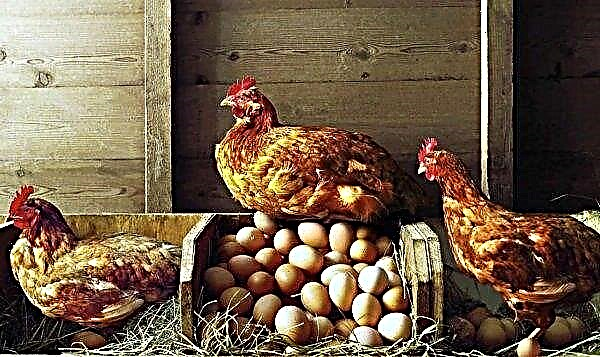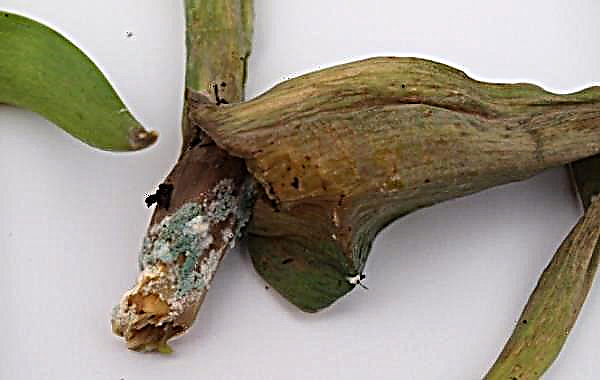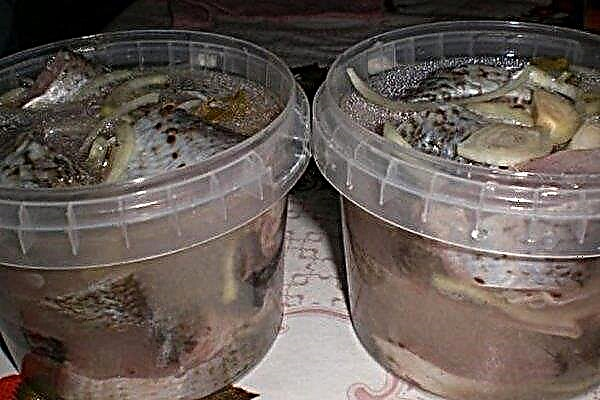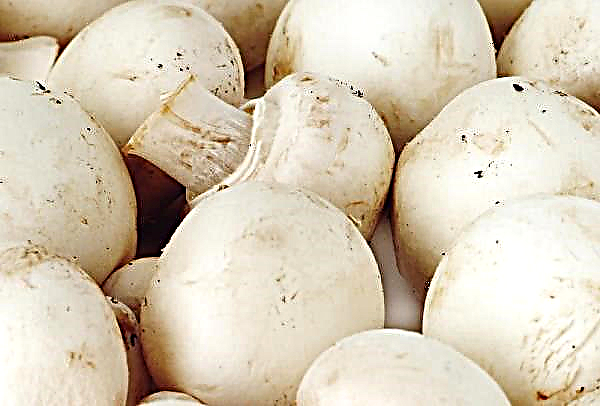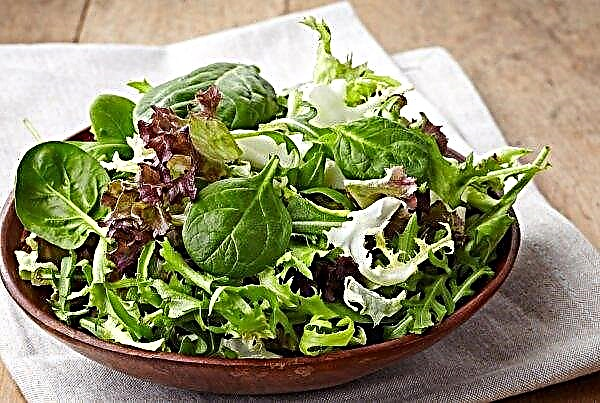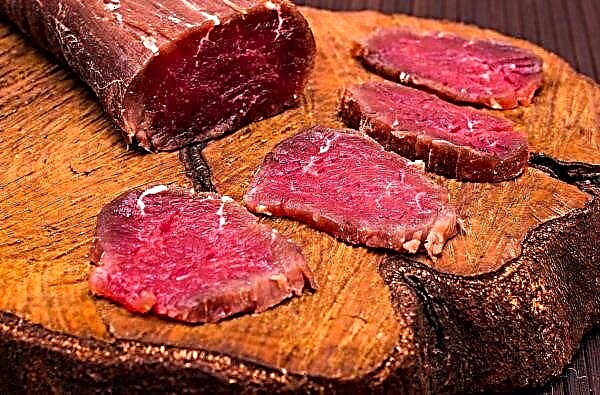Pinching chickens is a simple, but requiring attention procedures, which result in fresh, high-quality meat. If you happen to be faced with this case for the first time, then this article will come to the rescue. How to properly prepare the carcass for plucking, which processing method to choose and what to do with the bird after - we will try to answer all these questions below.
Pluck preparation
After the bird has been slaughtered, it is necessary to let the blood drain. To do this, it is advisable to hang the carcass by the legs for 3-4 minutes.
And while the liquid will drain, you can prepare a place for work.
Important! To process the carcass after plucking, be sure to take the tongs so as not to burn yourself.
When organizing it, consider the following points:
- plucking is accompanied by a rather unpleasant odor, so it is better to do this outdoors or in a well-ventilated area;
- prepare a box or bag for excess garbage, as well as a bag or container for feathers, if you plan to use them after;
- as you work, you will need clean water to clean the dirt, so prepare the container in advance;
- sometimes with manual plucking it can be difficult to cope with the feathers, for such cases it will not hurt you to prepare a small knife (down) or tweezers (for large feathers).

Chuck plucking methods
At all times, manual plucking of birds has been practiced, but thanks to progress, this process can be facilitated and significantly reduced by using mechanized devices. To choose which one is more suitable for you, their detailed description will help.
Manually
Experienced housewives quite quickly and skillfully cope with feathers, but if there is not enough practice, you will have to sweat.
The duration of this procedure will depend on the age of the bird and the plucking method you choose.
At the same time, the order of elimination of feathers is preserved:
- start with wings and tail;
- then go to the hips (do not forget to clean the skin from the paws);
- followed by the breast, stomach;
- then the back and sides go;
- and finish with skin under the wings.
Dry way
This is a time-consuming option, so it is usually used only in cases where it is not possible to use alternative methods.
- Its advantages include:
- minimum preparatory actions and necessary tools;
- excellent pen safety for further processing;
- meat obtained after such plucking can be stored raw longer without freezing.
- But he also has disadvantages:
- if you are plucking for the first time, there is a high risk of tearing thin skin;
- the fluff will fly apart, making it difficult to work;
- hemp from large feathers often remains;
- it will take much longer to pinch than with alternative methods.
Did you know? Hens are the most common bird species on the planet.
In a dry way, they start cleaning the carcass as soon as possible after slaughter so that the bird does not have time to cool.
Step by step, this process is as follows:
- The chicken is laid on a flat surface or fixed on its lap - who cares how to work.
- The first to pull out large fly feathers on the wings in the direction against their growth. Do it carefully, the risk of tearing the skin in this case is especially high.
- Next comes the turn of the front and back of the carcass, when small feathers are plucked out, fluff is periodically sprinkled with water so that the fluff does not fly apart.
- If large stumps remain, then without scissors you can not get rid of them.
- Fine fluff at the end can be scraped off with a sharp knife.
 This is how the plucking of chickens by the dry method takes place, after which you can start processing the carcass for further storage or processing of meat.
This is how the plucking of chickens by the dry method takes place, after which you can start processing the carcass for further storage or processing of meat.Hot way
This method can be safely called the most common among housewives, because it greatly simplifies the process compared to the previous version and at the same time does not require financial costs, in contrast to the mechanical method.
- However, these are not all of its advantages:
- the hot method is easier for beginners;
- also suitable for old specimens with rough skin and hard feathers;
- almost no stumps left.
- Its disadvantages include:
- need for preliminary training;
- reducing the shelf life of poultry;
- feather quality deterioration.
Did you know? The rooster is considered an unofficial symbol of two countries - France and Kenya.
Hot plucking follows the following scheme:
- Heat the water to 80–90 ° C in a container where the bird’s carcass fits.
- When the water is ready, dip the chicken completely into it for a minute.
- After this time, remove the carcass, let it drain out of water.
- Then you can start the procedure, starting with the feathers and gradually moving to other areas. Thanks to scalding, the skin of the bird softens, and the plucking process is significantly accelerated.
- In the end, you can scrape the carcass with a knife to clean from fluff and hemp.

In a combined way
As the name implies, in this method, enterprising housewives tried to combine the advantages of the two main methods. This became possible thanks to the use of steam, which opens the skin pores no worse than boiling water, but at the same time has less negative impact on the color and strength of the cover.
To use this method:
- Dip the carcass in a small bag or wrap it in a thick, clean cloth.
- Now take the steam iron, heat it to the maximum.
- Carefully start stroking the carcass, without missing a single corner, folds.
- To achieve the effect, treat the chicken in such a way for 10-15 minutes.
- After that, remove the material that wrapped the meat, and proceed to pluck manually.
Important! If there is no iron with the desired function, then it will replace its canvas, soaked in boiling water. Cover it with a bird and treat it with an ordinary iron.
Mechanically
If desired, a specialized apparatus can be used to pluck chickens at home. This is a special nozzle that is worn on a drill or screwdriver, in appearance resembles a brush for cleaning dishes. It is equipped with special rubber or silicone fingers and threads.
The fingers grab the feathers and, moving with the help of the motor, pull them out. The hostess only needs to rotate the carcass in the right direction.
Mechanical plucking of chicken: video
However, the use of such a nozzle leads to damage to the skin on the chicken, due to which the presentation is lost. But plucking with this method is on average 3-4 times faster. On sale you can find several options for such nozzles, so that every housewife was able to choose the right one for her.
If nozzles are usually used by those who infrequently engage in plucking, then for regular use it is better to purchase mini-versions of industrial machines. They look like small centrifuges, on the walls of which all the same fingers are placed. When the tank rotates, the protrusions knock down the pen, and it lowers into the tray below.
Such machines practically repeat the design of professional devices, but for home use they have been simplified by removing some functions.
They take up little space in the kitchen and significantly save the time of housewives on processing carcasses. In addition, these devices are able to work with any methods of poultry preparation: dry, hot, combined.
Important! Many farmers collect do-it-yourself chicken plucking machines. The basis is plastic or metal tanks, containers, but at least old pots, and heavy fingers are bought in the spare parts department.
How to pluck chickens in poultry farms
The volume of work in industrial enterprises is much greater than in private farms, and therefore more serious devices are used.
The workflow itself in this case is as follows:
- The carcasses of slaughtered birds are suspended by the legs, dropping into large containers filled with hot (60–70 ° C) salt water. There they undergo heat treatment for 2-3 minutes, after which they are much easier to pinch.
- Then the chickens are moved to pick-up machines.
 They can be of two types:
They can be of two types:- cycloautomaticwhose drums are cylindrical in shape and equipped with fingers. The principle of operation here resembles a washing machine: a high friction force pulls out a feather, which is then washed off periodically by the flowing water;
- disk. Carcasses are loaded into a container with metal disks on the walls. During rotation, they knock down feathers, which are immediately pulled into the bag by a special turbine.
Using machines, plucking several carcasses (3-5 pieces at a time) takes no more than a minute. After that, the processed bird is inspected manually in case of marriage and sent for cleaning and packaging.
Did you know? For people who have nervous work, nutritionists recommend consuming more chicken meat: it contains niacin, a vitamin that positively affects the state of nerve cells.
Further carcass processing steps
Even the most careful plucking will not ensure the removal of the entire feather cover on the bird, so the final processing step involves scorching.
To do this, holding the paws, they twist over a burning burner, constantly turning from side to side. This must be done promptly and carefully so as to prevent burns. Such a supply of fire and heat will help get rid of the remnants of fluff.
If you work in the fresh air, then instead of a burner, you can use a small open fire or a gas burner. Whichever option you choose for processing carcasses with fire, try to adhere to the following recommendations when implementing it:
Whichever option you choose for processing carcasses with fire, try to adhere to the following recommendations when implementing it:
- the bird must be dry at the time of singeing;
- if you are afraid of over-meat, you can grate the plucked chicken with flour before processing it with fire. Then there will be soot, but it is easy to wash it off with water;
- singe each area for no more than 2-3 seconds, otherwise the fat may melt or the skin will burst;
- thoroughly wash the fire-treated bird in running water.
After the gutted carcass must be gutted. To do this, you will need a sharp knife and oilcloth on the table to protect it from dirt.
The process itself is as follows step by step:
- The anus with the intestine is removed first.
- Then the goiter with the esophageal tube is pulled.
- Then they get the rest of the insides.
Important! Be careful not to damage the colon and pancreas when removed. Otherwise, their contents will fall on the meat, saturate it with an unpleasant taste and smell, because of which the pulp will not be able to eat.
Of the chicken entrails, the heart, liver and stomach are suitable for cooking, so they are left after having previously cleaned the films.
What to do with a pen
In addition to meat and offal, feathers and down are also valued in domestic chickens. They are not as expensive as goose, but can be used in various fields. On average, about 130 g of feather is obtained from one chicken, and up to 200 g from rooster, of which about 30 g is soft fluff. This material is used:
This material is used:
- as a stuffing for pillows, blankets and even outerwear;
- to create paintings, decorative ornaments.
However, most housewives simply sell valuable products to resellers at competitive prices. And the better the pen, the higher its cost.
To maintain the value of the material, it is important:
- store it in gauze or cotton bags;
- Prevent it from getting wet or dirty;
- periodically ventilate to prevent mold, rot.
Did you know? Due to the presence of calcium, iron, and B vitamins, chicken is an indispensable product in the prevention of heart problems and atherosclerosis.
At first glance, plucking chickens is a complex process, but, as in any other business, speed and quality here come with practice. If regular processing of birds is planned, it is best to purchase a special nozzle or feather removal machine. To obtain a tasty and healthy product, it is also important to gut the carcass correctly, which should not be forgotten.

